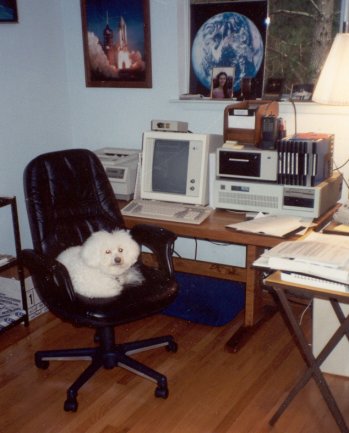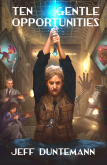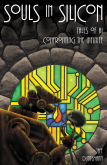- A chemical found in red wine may slow aging in mammals. Reservatrol is a hot item these days, and whereas there probably isn't enough in wine to have measurable effects on health or longevity, Big Pharma firm GlaxoSmithKlein paid $720M for Sirtris, a biotech firm doing research on the reservatrol family of chemicals. Thanks to Frank Glover for the link.
- Larry Steckler, who had worked for the Gernsback organization from 1957 until its bitter end in 2003, has published a 700-page biography of Hugo Gernsback. We've been waiting for a decent biography of our man Hugo for a long time, and I'll post my reaction here once I've read it.
- Bruce Baker sent me a link to photos of a (more or less) scale model of the aircraft carrier Harry S. Truman built entirely in Lego. The story has been written up (in English) on the Make Blog, with more photos here. My big question with Lego (having grown up on Meccano, in which everything is bolted together with real bolts) is how such monumental Lego sculptures stay intact. Is it all friction? I've built small things with Lego, but models that come apart in your hands don't seem to me to be anything near as good as the (admittedly holey) things you make with Meccano/Erector and their ilk.
- From Don Doerres comes a link to a software defined radio (SDR) on the Web, covering a portion of the 80, 20, and 40 meter ham bands. The “waterfall” visualization is fascinating, and something that “real” radios just can't do. We're good at matching patterns, and I was able to see when a new signal appeared anywhere on the covered band out of the corner of my eye. Contesters must love SDRs!
- Michael Covington suggested that unnecessary animations are a far bigger distraction and degradation of the computing experience than windowing, and I have to agree. This is one reason I continue to use older software: Its moving parts don't move unless they have to.
- Also from Michael comes a story from the UK about the fact that 2% of the 1£ coins in circulation are counterfeit. This boggles the mind: 1£ won't even buy lunch, and making enough coins to be worthwhile must take a lot of time and work, considering that you can and probably will do time if they catch you. (Does anybody remember Bernard Wolfe's wry short story “The Never-Ending Penny”?)
September, 2008:
Odd Lots
Setting the Ether on Fire
I finally finished my attic shortwave antenna a few days ago, after puzzling over how to do it for almost four years. It was both easier and harder than I thought. The project took up most of my spare time for a week, and required me to practice tossing a tethered tennis ball around up there between the two attic hatches.
I had to get the antenna up in the attic, above the walls of the house here, because the walls are stucco-coated chicken wire and thus form a very effective shield can. Even a 40' dipole in my workshop could pull in only some of the strong local AM broadcast stations. The new antenna works extremely well, and scanning the bands on Wednesday night with the Icom 736 brought in all the usual suspects from Europe at 9 MHz, along with an amateur station in Costa Rica at 7220 and another one that was (I think; copy on that one was poor) in Argentina. The quiet sun means that the bands above 14 MHz are basically dead, but assuming that we're not headed into the next ice age, they'll be back in a couple of years.
The wire was cut for 7200 KHz, and the measured SWR minimum was at 7130 (with another potentially useful one at 21400) so I got pretty close. Seeing if I could get a signal out was the next test. I tuned around on 40M to find a quiet spot, pressed push-to-talk, opened my mouth…
…and the fire alarm went off. I tore upstairs to find Carol in a panic and QBit barking furiously at the cold-air return where the siren lives. I didn't assume that the transmitter was at fault, but took a quick run around the house and garage to make sure nothing was burning, and by the time I reset the siren, the alarm system had already called the fire department. Nothing was burning, and with a red face I had to tell the firemen who came up in a truck (not a huge one, fortunately) that my transmitter had triggered a false alarm.
The garage smoke detector is perhaps 5' below the south leg of the dipole, and I may have to have the company that installed the alarm system run shielded cable to it. We think that the dipole was inducing sufficient current in the smoke detector cable to trigger the system, so the shielded cable may be enough. If the dipole is inducing currents in the smoke detector itself, the detector may have to go into a Faraday cage of some sort. The fact that the vulnerable detector is in the garage is fortunate. Out there a Faraday cage would be almost stylish; but maybe not so stylish on our livingroom ceiling.
So amateur radio station K7JPD will remain off the air for a little while longer. Damn. Hiram Percy Maxim didn't have this problem. Ubiquitous computing—and the wires that make it work—are a two-edged sword.
Scarcity Leaves Its Mark
Whether or not an unexamined life is worth living, examining what goes on inside your head is a lot of fun. I’ve become interested in psychology late in life (after treating it with contempt when I was a cocksure young rationalist) and identifying my biases and tracing them back down to their sources has become a minor hobby here.
My recent study of CSS reminded me of one of those biases: I hate windowing. I just hate it, and hate it so deeply I don’t even notice the hatred anymore. If you were to look over my shoulder as I work, you’d notice that I don’t use it. Whatever app I’m working in gets the whole screen, and when you can see the desktop at all, it means I’m in neutral and nothing useful is going on. I came to the insight after practicing fluid layouts in CSS. BTW, If you’re interested in learning how to do fluid layouts, I haven’t found anything better than Nate Koechly’s Web article “Intricate Fluid Layouts in Three Easy Steps.” Nate created the Yahoo UI Grids CSS system, which I may begin using once I learn enough CSS by building things from scratch. I like YUI because it supports fixed widths. Fluid layouts are not mandatory.
This is good, as I find fluid layouts peculiarly repellant. Things like this suggest a live frog nailed to a tree, squirming in agony. (Drag the corner of the window around and you may start to see what I mean.) Part of it is my long history with fixed page layouts in magazine and book work, and part of it is a desire to focus and not be distracted by things going on in other windows. The bulk of the bias, I think, proceeds from the same reason that the Greatest Generation were tireless savers and hated to waste anything: They grew up in conditions of scarcity. I ducked the Great Depression and WWII, but I followed personal computing from its rank beginnings, when displays were 16 X 64 character text screens or worse. I learned computers starving for screen real estate.
 The IBM PC gave us 24 X 80 displays, but that was never enough. Text windowing systems like TopView seemed insane to me, and back in April 1989, when I was doing the “Structured Programming” column in DDJ, I wrote and published an “anti-windowing system” that treated the crippled 24 X 80 display as a scrollable window into a much larger character grid. Full-page text displays eventually arrived: The MDS Genius 80-character X 66-line monochrome portrait-mode text display (left) sat on my desk from 1985 through 1992, when Windows 3.1 finally made text screens irrelevant. (Lack of Windows drivers for the display soon forced MDS into liquidation.) It wasn’t until I bought a 21″ Samsung 213T display in 2005 and started running at 1600 X 1200 that I first recall thinking, “Maybe this is big enough.”
The IBM PC gave us 24 X 80 displays, but that was never enough. Text windowing systems like TopView seemed insane to me, and back in April 1989, when I was doing the “Structured Programming” column in DDJ, I wrote and published an “anti-windowing system” that treated the crippled 24 X 80 display as a scrollable window into a much larger character grid. Full-page text displays eventually arrived: The MDS Genius 80-character X 66-line monochrome portrait-mode text display (left) sat on my desk from 1985 through 1992, when Windows 3.1 finally made text screens irrelevant. (Lack of Windows drivers for the display soon forced MDS into liquidation.) It wasn’t until I bought a 21″ Samsung 213T display in 2005 and started running at 1600 X 1200 that I first recall thinking, “Maybe this is big enough.”
And only just barely. People who were born with a 1024 X 768 raster in their mouths may not be able to figure it, and I guess there’s really no way I can explain. It’s just me. Starve a man for screen space for thirty years, and he is unlikely to want to share what he has with more than one app at a time. Scarcity leaves its mark.
CSS Progress
I'm continuing my re-exploration of CSS in my spare moments, and it's worked out very well so far. If you're doing static pages that don't need Javascript or other fancy stuff, CSS can make very slick layouts with only a handful of rules. The problem of many people using old browsers that don't fully support CSS still exists (especially for IE) but to some extent it always will. CSS-challlenged IE6 still has 32% of the browser market, which means that at least 32% of people will not see your pages render correctly, and that seems like an awful lot to me. I thought I was alone in grumbling about this, but I'm not—and this guy does webstuff for a living.
Anyway. The browsers aren't there yet, but they do enough to support my modest goals. First of these is to get rid of table-based layouts in my Web articles. Tables are a kluge, but they were the best that the Web could do for its first ten years. Another goal is to create an “imprint style” defined in a single external style sheet. I've taken my several articles about kites and have been CSS-izing them to a common imprint style. These three articles work off the same style sheet:
(The Hi-Flier article is the biggest and messiest, and is still on the workbench.) The headers are custom-made images for the sake of the decorative title fonts. One of the Web's biggest defects is not having embeddable fonts. If you want to use fancy fonts, you have to render the font text in graphics and treat the rendered titles as images. I don't mind doing that at all; the page title is present in the META information, so the Semantic Web, wherever the hell it's hiding, will not be deprived of its due.
I'm still interviewing CSS editors. I've already gone through a bunch of them. The biggest disappointment was Amaya, an editor/validator that goes way back and was created by the W3C. Something that old (it's been around since 1996!) should be much better by now. Six of the toolbar icons are empty holes, and it crashes with the same unenlightening error on Win2K that Kompozer does. It did help me clean up my markup between crashes, but there are other ways to do that. Another major disappointment was TopStyle, an $80 commercial product with a downloadable trial version. The trial version is a good thing, because the only supported preview browser is IE. You can rig it to preview with Firefox, but there's a three-year-old message claiming that the Mozilla embedding technology is “experimental” and not supported, with warnings that border on those against crossing the streams. No way to preview in Opera or anything else. This is the kind of lazy-ass nonsense I will sometimes forgive on free products, but it's most of the way to 2009, and anything that costs money and claims a preview feature had better do IE, Firefox, and Opera, or it gets the hook. TopStyle got the hook.
In the meantime, I'm using Kompozer every day downstairs on my XP machine, and it hasn't crashed yet. It's got some thin spots—by default it creates internal style sheets, and you have to manually insert a link to an external sheet—but now that I've gotten to know it, my productivity is way up. Kompozer is a cleaned-up version of Nvu, and the French chap who wrote Nvu is working on a successor. (Having a little French helps here, though most of his posts are at least mostly in English.) Kompozer/Nvu's heart is definitely in the right place, and if I have to use it for awhile until M. Glazman releases its successor, I should at least be able to get some work done.
Other odds and ends associated with my efforts to transcend Webfossilhood:
- I tried to upload WordPress to Sectorlink using a product called ZipDeploy. Apart from the arrogance of having a three hour trial period (!!!) the damned thing got partway through the longish upload and…vanished. It didn't show an error dialog. It didn't even beep. The app window simply disappeared, leaving the upload incomplete. There was nothing running in Task manager. It Died And Made No Sign. Hook!
- Sectorlink being unhelpful in this regard (and I will not be renewing the contract for next year there) I went over to my Fused Network account and installed WordPress through their Installatron utility. It took 2 minutes and worked flawlessly. I've had difficulty installing Gallery 2 there, but it's looking like the problem is with Gallery and not Installatron.
- Contra will be moving to WordPress sometime around the first of the year, depending on how quickly I learn it and how long it takes to sort out the hosting equation. There is a plug-in to do automatic cross-posts to LiveJournal, so I will be keeping my LiveJournal mirror. But this hand-edited table monster will (finally) be laid to rest. My WordPress install is browsable, but don't bookmark it, and don't expect it to be a mirror. It's just test posts. I have it on junkbox.com right now, but it will be on duntemann.com when it “goes live.”
And so to work.
Evaluating WordPress
I’ve been manually editing ContraPositive Diary in Dreamweaver since 2000, and prior to that (mon dieu!) in Notepad. The template is typical 2000-era table-bashing, and it has some quirks. I got the notion not long back that this nonsense has got to stop, and I have to sit down and think through what I’m going to be doing in terms of Web presence for the next few years, assuming that it’s not going to be what I’ve been doing for the last ten.
So what you’re looking at is an experiment. ContraPositive Diary is still alive and well at its usual home on duntemann.com and will be there for awhile yet. I’m playing with themes and plugins and CSS and a lot of other things, and I suspect that at some point I will switch over to WordPress. Soon. (Or maybe not soon.) But not yet.
Crossposted from contrapositive.junkbox.com
More on John T. Frye
I just uploaded a new version of my Carl & Jerry index, including an expanded bio of John T. Frye. We know a lot more about him than we did a couple of months ago, and almost all of the new material came to me from Lisa Enfinger, whose parents were close friends of Frye’s for many years. I’ll summarize here:
- John Frye was stricken by polio as an infant, and he could not walk at all, throughout his entire life.
- That said, he was not immobile: He had hand controls installed on all of his cars, and traveled extensively throughout the United States. He owned a 1963 Olds Dynamic 88, but no word on whether he ever had a Buick. (Legend holds that he was a Buick man, but no one can tell me why that should be so.)
- Remarkably enough, he never attended Purdue University, but instead studied at the University of Indiana, Columbia University, and the University of Chicago. Lisa did not know if he ever received a degree.
- More remarkably, he never studied engineering, but preferred English, journalism, history, and psychology.
- Her parents both attended Purdue in the 1940s while earning their degrees in chemistry, and John visited them there. He probably knew other people at Purdue, and it was not a long drive to Layafette from Logansport in any event.
- He is credited with close to 600 short articles, including Carl & Jerry and Mac’s Service Shop. His first publication was supposedly in Hugo Gernsback’s Radio Craft in the early 1930s.
- Her great uncle Gene Buntain was Frye’s close high school friend in Logansport, and the two of them discovered electronics and ham radio together. (Could Gene Buntain have been the inspiration for Carl?)
- John Frye lived much or most of his life at 1810 Spear St. in Logansport, one block south of US 24. It was a little weird to dive down from orbit on Google Earth and be staring at the roof of Frye’s old house. One wonders what the man himself would have thought of it.
I dug through my smallish collection of really old radio magazines (including a few Radio Craft) and did not see him there, but if any of you guys can find any of his early articles, I would like citations.
Needless to say, I’m still looking for details on John Frye’s life, especially concerning where he learned radio and TV servicing and where he practiced it. Lisa said she never heard of him owning his own shop nor even working for a shop in town, so that would be a question worth answering.
Finally, I had written to Frye’s younger brother Bailey Frye late last year, but he was evidently too ill to respond, and I found today that he passed away at the end of April, at age 90.
Many thanks to Lisa Enfinger for taking the time to send me all the information, including the scan of a newspaper article from 1962 that I first lined to a couple of weeks ago, including a picture of Frye at that time, when he was 42.
Odd Lots
- Do not—I repeat—do not buy the Greenlee Cablecaster if you're faced with running wires through difficult places. I'm running a 65-foot shortave antenna in our attic, basically throwing cords for stringing two wires from the center of the structure to each end along the long axis, and the unit was a total botch. In every single case, the fishline tied to the nifty glow-in-the-dark dart broke under the force of the spring that throws it. (I wisely tried it out in the street before I took it up in the attic.) After narrowly resisting the urge to stomp on the damned thing, I drilled a hole in a tennis ball, threaded a contractor cord through it with a large cotter pin, and lobbed the ball myself. It worked. And here's what I was dealing with. I got the ball through that maze with my own right arm, though it took fifteen minutes of bad throws. I now know what pitching practice must be like.
- Alluva sudden, egg and onion matzo crackers have simultaneously vanished from all the local supermarkets. I have not seen any for two months, after reliably seeing them in all kosher sections throughout the five years we've been here. They've been my favorite soup cracker for 25 years. I cannot figure this; if there's been a change in kosher rules or something like that, it has not reached Google yet.
- An article in today's Wall Street Journal reports studies indicating that atheists are four times more likely to believe in Bigfoot, ghosts, and the Lost Continent of Atlantis than people who go to church at least once a week. (31% vs. 8%) Faith appears to be inborn, and if you don't believe in God, well, there are plenty of other things to choose from in the marketplace of unprovable phenomena.
- I'm not sure this is proven, but I sure wish it were: A study indicating that eating vegetables shrinks your brain. (Thanks to Brook Monroe for the link.)
- And if broccoli-induced brain shrinkage isn't enough to scare you off the Whole Foods wagon, consider that organic soils are often just as contaminated with heavy metals as soils used in conventional agriculture.
- Off-brand 16GB SDHC cards are now down to $35 at NewEgg, and even name brands like SanDisk are in the $60 range. Three of those will carry every bit of data I have except for ripped ISOs, and according to a friend of mine who works in the industry we still have no crisp idea how long the data will last.
- Today is International Talk Like a Pirate Day. I dunno; it seems mighty quiet somehow. Wait a sec…the pirates all had subprime mortgages on their ships—and they're all now underwater!
Gritting My Teeth Over KompoZer
I've been re-learning CSS over the past week and change, and it hasn't been hard because I didn't learn all that much of it to begin with. Back in 1999 and 2000, CSS was mostly proof-of-concept in Web browsers. The spec itself is a work of brilliance, but it wasn't until the release of IE7 at the end of 2006 that it was possible to make even fairly simple pages render identically on IE, Firefox, and Opera. IE6, which an amazing (appalling?) number of people still use, will not render the max-width property correctly, so fluid and even flexible layouts are still problematic.
No matter here. I'm a page-oriented, fixed-width kind of a guy. My 25-year publishing background has taught me to think in textual spaces that don't change shape. This is in part my webfossilhood showing, but in truth it's not a new argument, and the discussion pivots on how you use your UIs. I display only one thing at a time on my screen, as an inducement to personal focus, and so I maximize all windows that I use except for those belonging to small utilities. There is sometimes a need to show two or maybe three windows at once, but it doesn't come up often for me, and when the need arises, I know it.
So what I've been exploring are table-free fixed-width CSS layouts that will render on an 800 X 600 display (as you find on some of the smaller netbooks) without kicking up a horizontal scroll bar. I haven't tested this on all browsers on all platforms, but the magic number is probably 775. If you don't insist on total fluidity, you can make a very nice 2-column layout with no tables and very little CSS. Here's my learning project. It's not an expert job (I'm not an expert) and it's far from finished, but considering how few lines of CSS it took to do it, I'm pretty happy. I'm going to try to center the material as my next step, and from my reading that shouldn't be hideously difficult.
It's worth a little time here to describe my experience with Kompozer. Overall, it's a nice little item, especially for simple table-oriented layouts. Its CSS features are limited to what CasCadeS can do, and as best I can tell, CasCadeS was abandoned in 2002. I'm still shopping for a good CSS-capable Web editor, but in the meantime Kompozer has been a reasonable learning platform. It has some weird gaps—for example, I see no way to make it insert an em dash—but that's not my major problem. Kompozer does not work reliably on Windows 2000. It crashes frequently when you click the tabs to shift between the different views (text, tags, source, and browser preview) and sometimes when you click the Save button, egad. Then when I went downstairs to my XP lab machine, I edited for hours and suffered no crashes at all. Whose fault that is, well, I won't pursue, but it feeds into the difficult ongoing decision process I have here over moving to XP for my daily work. These days, alot of media stuff, even free software, won't work reliably (or sometimes at all) on Win2K. I have to force myself not to grit my expensive new teeth when I think about it.
Anyway. CSS reminds me a little bit of PL/1. Both technologies tried to bite off way too much at one time, especially considering the state of the underlying technologies when they first appeared. CSS would probably have been accepted more quickly if it hadn't been such a huge challenge to the developers of HTML rendering engines. As with PL/1, different groups with different emphases focused on different features, with the result that identical rendering on all the major browsers still isn't quite here, even though CSS is now ten years old, with roots going back another five. A simpler standard intelligently incrementalized and expanded every three or four years would have been better.
The lack of genuine WYSIWYG tools for CSS bothers me, but I keep reminding myself that hand-futzed CSS/xhtml is not the future. The future is turn-the-crank Web apps that manage content. Tweaking those requires that you know PHP and especially CSS, so I'm cracking the books here and brushing up. I will shortly have a Joomla instance to play with, and Drupal will be close behind. I won't be redesigning Contra because it's all going into a CMS as soon as I can manage it. Hand-coding is addictive, but in the vast majority of common cases, machines do it better and faster. After all, I'd much rather be researching and writing articles than hand-formatting them.
Why I Don't Use LinkedIn Much
From time to time I get notes from people who have asked me to connect to them on LinkedIn and then didn't have their invitations accepted. I need to emphasize right here that it's not because I don't like you, though I wonder sometimes just how useful LinkedIn actually is. I've done a few introductions, but that's about it. I don't have the paid version, and thus most of the system's features aren't available to me.
No, the problem with LinkedIn is purely technical: Most of the time, the damned thing goes into the bushes after I try to respond to an invitation or other communication from another member. The browser spinner spins and spins, but for whatever reason the progress bar gets about three-fourths of the way toward the finish line and just stops there until the connection times out.
I get this behavior from other sites now and then. I've been very interested in the CSS WebApp IStylr, but I have yet to get anywhere with it for the same reason: Click on a control, and the transaction stalls without going to completion. IStylr may simply be on an overloaded server. It's a one-man project and it's not located in the US. LinkedIn has no such excuse, and I see this problem only very rarely on other large sites. Sometimes logging in very very early or very very late seems to help—but if I have to log in at 2 ayem to get it to talk to me, well, ain't gonna happen.
Every so often I go up to LinkedIn to try and work on the stack of invitations and other things I have waiting, and every so often I get a few transactions to go through. It seems like a lousy way to run a cloud computing site, and I wonder if there's something weird about my own system configuration that LinkedIn just doesn't play well with. If you've had this kind of problem with LinkedIn (or if you have any thoughts on where I should look for possible incompatibilities) I would fersure like to hear about it.
Odd Lots
- Greg Singleton sent me a pointer to an English translation of a Russian short story done in comics format. I’m not a huge fan of comics, but the wizardry in this piece is mostly in the drawings: When I saw the large pane in which the man stands behind the boy he once was, reading the same Jules Verne book against the backdrop of Captain Nemo’s ocean—the very same exact copy of the same book—I shivered.
- Another sunspot, albeit a very small one, has appeared, so we’re not likely to break the 1913 record of the longest time without an observed sunspot any time soon. Also note the article on Martian dust devils, which have been dancing around the Phoenix lander and have been caught on video.
- This article on Intel’s current research into programmable matter (but not the quantum dot kind, fortunately) qualifies as the worst-edited Web article I’ve seen in a month. Don’t these people proof their work before they post it?
- The Large Hadron Collider went live the other day, and people died. Strange physics has nothing on strange psychology.
- Particle Accelerators of Unusual Size (PAUSes) loom large in a number of apocalyptic SF novels, and here’s a summary collection, courtesy Frank Glover.
- Here’s another reason I rather like Good Pope Benny: He’s cracking down on nutcase apparitions of the Blessed Mother, which have gotten weirder and weirder and fuller of God-stomps-the-shit-out-of-everybody apocalypticism in the last sixty or seventy years, and are making the whole idea of Catholicism look bad.
- And to round out this this discussion of Apocalypses of Unusual Stupidity, I give you a list of thirty ends-of-the-world that never happened. Here’s hoping that the New Agers will become so dispirited when nothing happens on December 26, 2012 that they will take up a more productive hobby, like woodburning, or breeding planaria worms.










